How much do 'U' know about Urban Vehicle Access Regulations?
Urban Access Regulations in Europe
How much do 'U' know about Urban Vehicle Access Regulations?
What are Urban Vehicle Access Regulations (UVARs)?
They are rules for traffic entering cities. They can also be seen as regulations, restrictions or bans. They are implemented to improve the town or city in a number of ways, see “Why Urban Access Regulations”.
There are three main types of scheme, with emissions, costs or other (see our overview page). There are also combined schemes, for example where vehicles must both pay and meet emissions standards; or permits are only given if emissions standards are met.
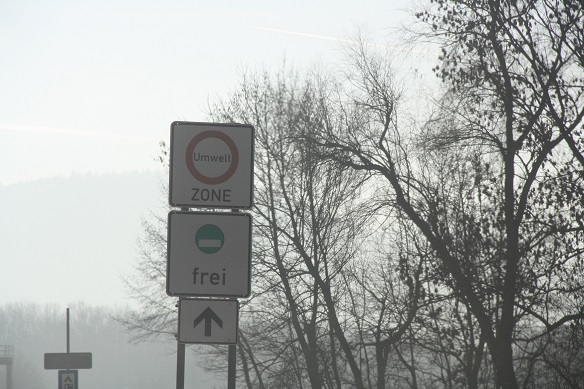

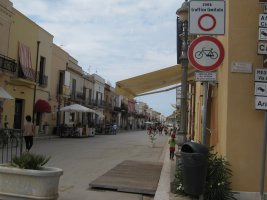
What type of Urban Vehicle Access Regulations are there?
You can find below the main kinds of scheme:
Under some definitions, such as the EU Horizon 2020 ReVeAL project on UVARs , Spatial Interventions are also defined as UVARs. Spatial Interventions are where changes in the road layout prevent vehicles accessing parts of the road network. For example, one-way roads can be combined to stop through traffic in an area. This could be through bollards, one-way streets, parking bays becoming recreational parks etc. These can be used to compliment, or instead of 'traditional' UVARs. This website doesn't generally include Spatial Interventions.
For more information on the different main types, see our background pages on:
![]() Urban Toll Schemes / Congestion Charging (CS)
Urban Toll Schemes / Congestion Charging (CS)
![]() Emergency Air Pollution Schemes
Emergency Air Pollution Schemes
![]() There are also increasingly Zero Emission Zones
There are also increasingly Zero Emission Zones
![]() often as a later phase of current Low Emission Zones
often as a later phase of current Low Emission Zones
Full information on each city is given on our full city pages. You can find these through the city search on most pages, the Schemes by Country pages or our map.
If you are planning a trip or tour of Europe, our route planner can help identify which cities have urban vehicle access regulations.
Impacts of UVARs
There is a large overlap on the kind of impacts different UVARs have. Those aimed at resolving traffic congestion issues such as road tolls, traffic limited zones, permit schemes, controlled parking, can also have positive impacts on all the issues that one might want to use UVARs for, such as:
The reduction in traffic, and therefore the noise and emissions-heavy stop-start congested traffic, will also have a positive benefit on many other aspects.
Most ‘standard’ low emission zones may have their impact mainly on air quality, as the vehicles are replaced rather than the trip mode changed. Combined low emission zones can have wider effects, and Zero Emission Zones can also impact noise and climate aspects.
For more information on the different impacts of different schemes, see our impact pages for Low Emission Zones, urban road tolls and other urban vehicle access regulations.
If you are a city or other public authority
You might like to look at our Public Authority page.
What are urban road tolls?
An urban road toll is where entry to an area is subject to payment. This is usually done to reduce traffic congestion or traffic jams in the city, but can also improve other issues, such as air quality and noise. In most cities the money raised from the schemes is usually spent improving transport in and around the city.
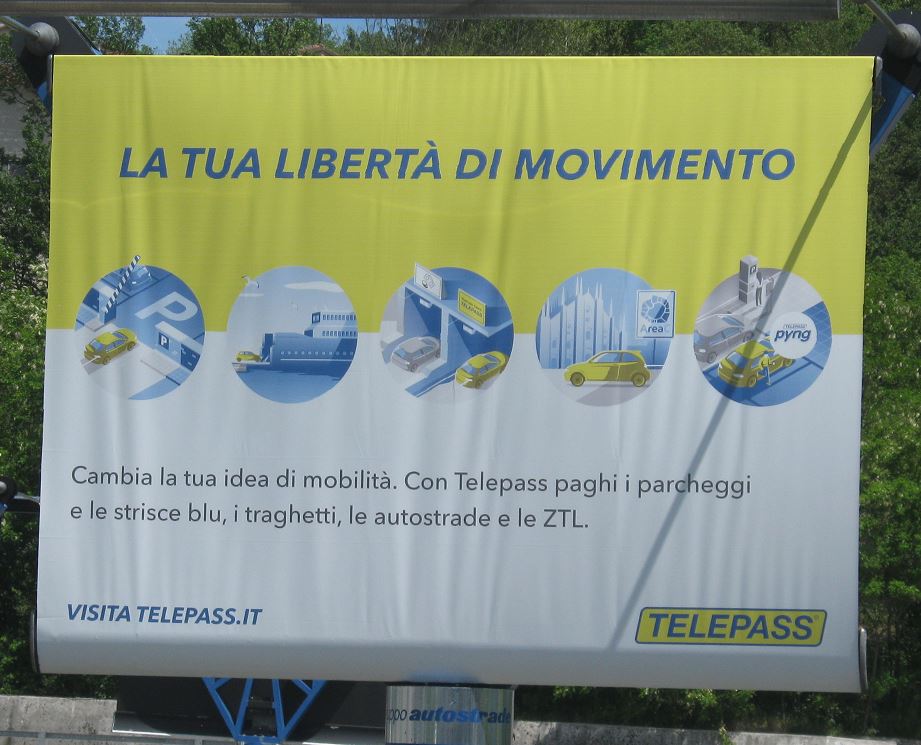
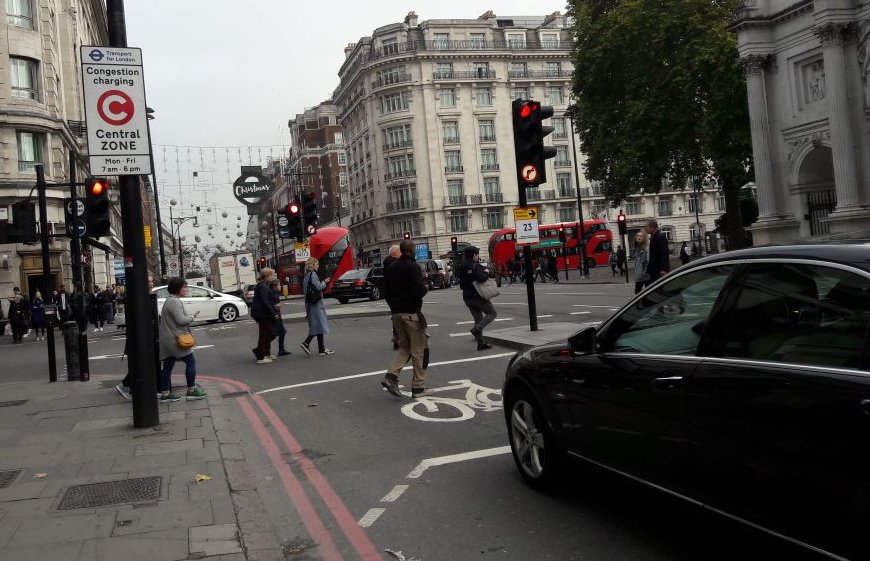

What are urban road tolls?
The most well known schemes are in London and Stockholm, but there are other schemes in Europe.
The urban road toll can be operated by camera enforcement, an electronic transponder, or by paying on entry to the area.
Other cities do not allow dirtier vehicles to go into the city (low emission zones) or require permits or other regulations (Access Regulations).
Some access regulations require payment for permits - if you are permitted to have a permit. However, these schemes are covered under Access Regulations.
Many cities and towns struggle with the balance of congestion, air pollution, noise levels, accessibility, damage to historic buildings and other pressures of urban life. Many cities have levels of pollution that harm our health, and much of the pollution comes from the traffic. Congested, polluted, noisy cities are not attractive for businesses or residents. Congestion also has a significant impact on the economy, costing nearly 100 billion Euro, or 1% of the EU's GDP, annuallyi. Urban Road Tolls, or Congestion Charging is one of the ways to reduce traffic and congestion in a city, and ensure that those that need to travel with a vehicle - for example deliveries - can travel rather than sitting in a traffic jam.
There are many ways to seek to tackle these issues, usually with a combination of many measures together, see what else is being done to reduce air pollution?. A number of cities have a tolling scheme, to regulate access to the whole or parts of the city.
How to find schemes on our website
To find the Urban road tolling schemes search our map for the red dots (you can un-click the other schemes to make it easier), or look under the scheme lists in the country pages to find the schemes, or in the case of Italy the regional pages.
Cities with charging schemes are noted with a "- CS" after the city name, and the name appears in red. Where the menu item has just the city name, the scheme is a low emission zone, - AR and blue is an access regulation.
LEZs in the following countries require action before you enter the zone. The situation for each country is listed below, in alphabetical order.
A separate sticker is required per country. With the exception that the Swiss scheme accepts the French stickers, and any future CZ schemes would accept the German stickers.
For all low emission zones, a single Sticker is valid for each country. In Italy, the only low emission zone that requires a sticker are those for the Bolzano Province in Italy, where there is a single sticker for the whole region).

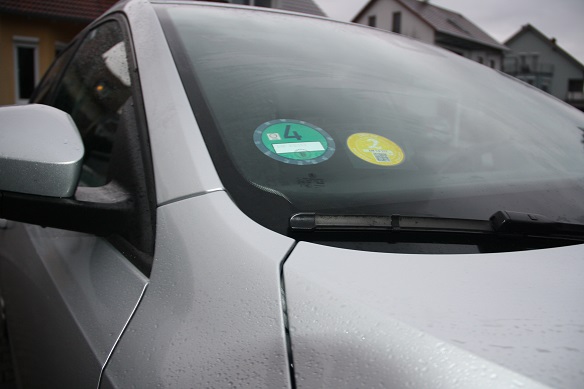
Please note:
Please allow enough time for the sticker to reach you. At times of high demand to foreign addresses it can take up to a few weeks.
Do not get caught out by scam Sticker Sellers!! Please also note, for the lowest cost stickers, please buy stickers from the official sources linked to on this website. There are both fake sites and sites that charge up to 5 times as much as the official websites linked from our website.
Austria: windscreen stickers are increasingly needed in the Austrian LEZs. Stickers are required for Vienna and Niederösterreich, and we recommend getting a sticker for heavy duty vehicles in Austria. In the Austrian LEZs where a sticker is not yet required, you need to show your vehicle papers if controlled.
Belgium, foreign vehicles registered abroad need to register, as well as some other categories, eg some retrofitted vehicles if the retrofit is needed to meet the required standard. Belgian and Dutch vehicles do not, in general, need to register. See our Belgian pages.
Czech Republic: in Prague you will need a windscreen sticker (likely to be able to be either a Czech or German one) once the LEZ starts.
Denmark: all heavy duty vehicles require a sticker, see our Danish pages.
Finland: in Helsinki the LEZs affect only public authority vehicles, under their own arrangements.
France: all vehicles require a Crit Air sticker, see our French pages. The Mont Blanc Tunnel is controlled manually at the toll point, Euro standard is estimated by proof of the age of the vehicle.
Germany: a windscreen sticker is required for all vehicles in all German LEZs. Stickers [Umweltplakette in German] can be bought from garages, testing stations [TÜV], the LEZ city administration, or online, for example from Berlin city.
Greece: in Athens control is manually through vehicle papers, no need to register.
Italy: You only need a sticker in Bolzano-Bozen Autonomous Province , see our Bolzano page. The Mont Blanc Tunnel is controlled manually at the toll point, Euro standard is estimated by proof of the age of the vehicle.
The Netherlands: Dutch vehicles are registered through the national database, no need to register.
Norway: you need to ensure that you pay the tolls for your vehicle. See for example the Oslo LEZ page.
Portugal: Lisbon control is manually through vehicle papers, no need to register.
Spain: Barcelona and Madrid have emergency smog schemes and Barcelona will have an LEZ. In Madrid parking fees vary by emissions. Get a sticker from the authorities.
Sweden vehicles with existing exemptions need to have a windscreen sticker, no need to register.
UK: In London, British vehicles (not Northern Irish, Channel Island etc) are registered through the national vehicle database. The following vehicles, not on this database need to register separately. Registration makes sure that the authorities have the information on which vehicles comply.
Outside London so far the LEZs in operation affect only public authority vehicles, under their own arrangements.
There are a number of fictions about Low Emission Zones. This document looks to clarifies some of them and separates fact from fiction.

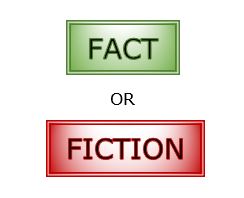

Fiction: You must buy a special sticker at a newsagent or Berlin office to be able to drive into Berlin by car.
FACT: There is the same LEZ sticker Germany- wide, and this can be bought on the web (see for example TÜV), by post, person and web from any LEZ authorities and many other German towns. It can also be bought from any TÜV station (annual vehicle inspection agency, at least one in each town). Many hotels in LEZ cities also offer to order the stickers on behalf of their guests, if they get the documents needed in advance.
Fiction: My windscreen will be filled with different stickers.
FACT: For each country which requires stickers, there is one sticker per country.
Stickers are only required for German, French, Spanish, and Danish LEZs and one Italian LEZ. Stickers are required in Sweden only for very old exemptions. If there are to be low emission zones in the Czech Republic, it is expected that the German sticker will also be valid.
Fiction: There is no cost benefit analysis undertaken for Low Emission Zones.
FACT: Cities that implement LEZs have air quality action plans. This means that they will have assessed their air quality, identified the emissions sources, identified a package of measures to deal with air pollution, and assessed whether a LEZ is an effective measure to implement. In some countries the process towards an LEZ is more formalised, such as in the Dutch roadmap, which sets out what sets need to be taken to implement an LEZ, and under what conditions it can be implemented. However in each LEZ city it will have been assessed and identified as an effective air quality management measure.
Fiction: There is no co-ordination of Low Emission Zones.
FACT: In every country with more than one LEZ there is a national LEZ framework (see here for an outline of each of these national LEZ frameworks). In Germany there is also co-ordination within the Bundesländer (regions), which generally have LEZs with the same emissions standards. The exception is Italy. In Italy there is often regional co-ordination, which can allow for rules for local towns to be more strict than the regional standard. However this is tolling, and a number of regions, for example Lombardia and Emilia-Romagna now have more rigid frameworks, also setting out future plans. Information on all LEZs in Europe can be found on www.urbanaccessregulations.eu.
Fiction: Low Emission Zones are often implemented at short notice.
FACT: Most LEZs are notified at least a year in advance. Some of the German LEZs have been announced more shortly, but therefore often introductory phases with a wider range of exemptions and warning letters instead of penalty notices being issued. The exception is Italy, where in some cases short notice is given of implementation or re-implementation / continuation of a time-limited or winter LEZ.
Fiction: Access to an Low Emission Zone depends on how many children or cars you have.
FACT: This is not the case. In Germany there are ‘hardship’ exemptions that can be applied for. These ‘hardship exemptions’ are for little businesses that can prove that their existence would be threatened by buying a new vehicle, or those on low incomes who can prove that they cannot afford to buy a new vehicles. The definition of low incomes is usually taken from the German legal system, and depends on income levels and the number of people dependent on that income. This is usually for vehicles for which there is no retrofit possible. In Italy, as well as other countries, there is sometimes grants towards scrapping and replacing vehicles for those on low incomes.
Fiction: Low Emission Zones are just there to penalise motorists.
FACT: LEZs are implemented as a part of a wider ranging air quality action plan, looking at reducing emissions from many sources. These other sources can include factories, households, construction, shipping, railways, as well as road transport. Find out more from our "what else is being done to reduce pollution" page. LEZs are implemented to improve air quality which improves health, which affects all, particularly children, the elderly, those in poor health and drivers – see our LEZ background pages for more information.
Fiction: Low Emission Zones have no impacts, and impacts have not been assessed.
FACT: Many LEZs have undertaken post-implementation assessments. The assessments have shown positive impacts on air quality. In some cases there has been marginal impact on one pollutant, but more significant impacts on the other. A selection of LEZ impacts can be found on this page.
Fiction Low Emission Zones are purely environmental measures that take no account of economic or social factors
FACT: LEZs are implemented after careful consideration, as stated above. In all LEZs the emissions standards are chosen to be minimum possible to achieve the air quality improvements needed. LEZs often allow vehicles to be retrofitted with a diesel particulate filter to allow lower cost compliance. Social and economic factors are also taken into account in different ways in different countries. The methods can vary due to the different vehicles affected. For example in Germany and the Netherlands there have been grants towards retrofitting vehicles and hardship exemptions if the vehicle operator can prove they cannot afford to meet the emissions standards. In Italy some LEZs do not operate in the middle of the day, allowing those that are unable to provide access, but with less flexibility. In London occasional access can be gained by paying a daily charge. LEZs ensure that public transport still works to allow people access to the cities.
Fiction: All Low Emission Zones apply to cars.
FACT: The vehicles affected by LEZs vary around Europe, but they are usually focused on heavier vehicles. Few LEZs affect cars, see the city pages for further information.
A low emission zone stops the more polluting vehicles travelling in an area and reduces pollution. Low emission zones can have a significant impact on air pollution. However, they often do not solve the problem alone. Other measures are also needed.
Most European cities have Air Quality Action Plans to improve air quality. They often include implementing a low emission zone, as one of the single most effective measures. What is included an air quality action plan will depend on the most significant sources of pollution in the city and how they can be reduced. The city action plan works together with national, regional and EU measures.
Action on pollution is taken at the appropriate level, local, regional, national, Europe and world wide.
Local measures for road traffic
Local measures for other pollution sources
Measures often taken at a national level or regional level
European and international measures
Examples of local measures for road vehicles:
Examples of local measures for sources other than road vehicles:
Some measures are specific to some areas. For example in Scandinavia the studded winter tyres used in winter are a particular problem as they create lots of additional dust from the road surface. Specific measures are therefore taken for this studded winter tyres.
Examples of measures often taken at a national level or regional level, include:
The European Union plays an essential role in reducing air pollution, through for example vehicle Euro standards, cleaner road, off-road or shipping fuels, aircraft policies or setting EU Air Quality Standards to protect health.
Measures that need to be taken at an international level, include those for shipping and aircraft. Agreements have been made, for example, to limit the sulphur content of shipping fuels, both generally and in certain shipping areas. Further discussions on shipping and aircraft emissions reductions are being undertaken. These agreements often take longer to happen, as greater numbers of different countries need to agree them.
Low Emission Zones (LEZs) have had a positive impact on air quality in many European cities. They are one of many measures that are implemented in cities to improve air quality. Poor air quality has an impact on our health. Improving air quality improves our health and lets us live longer.
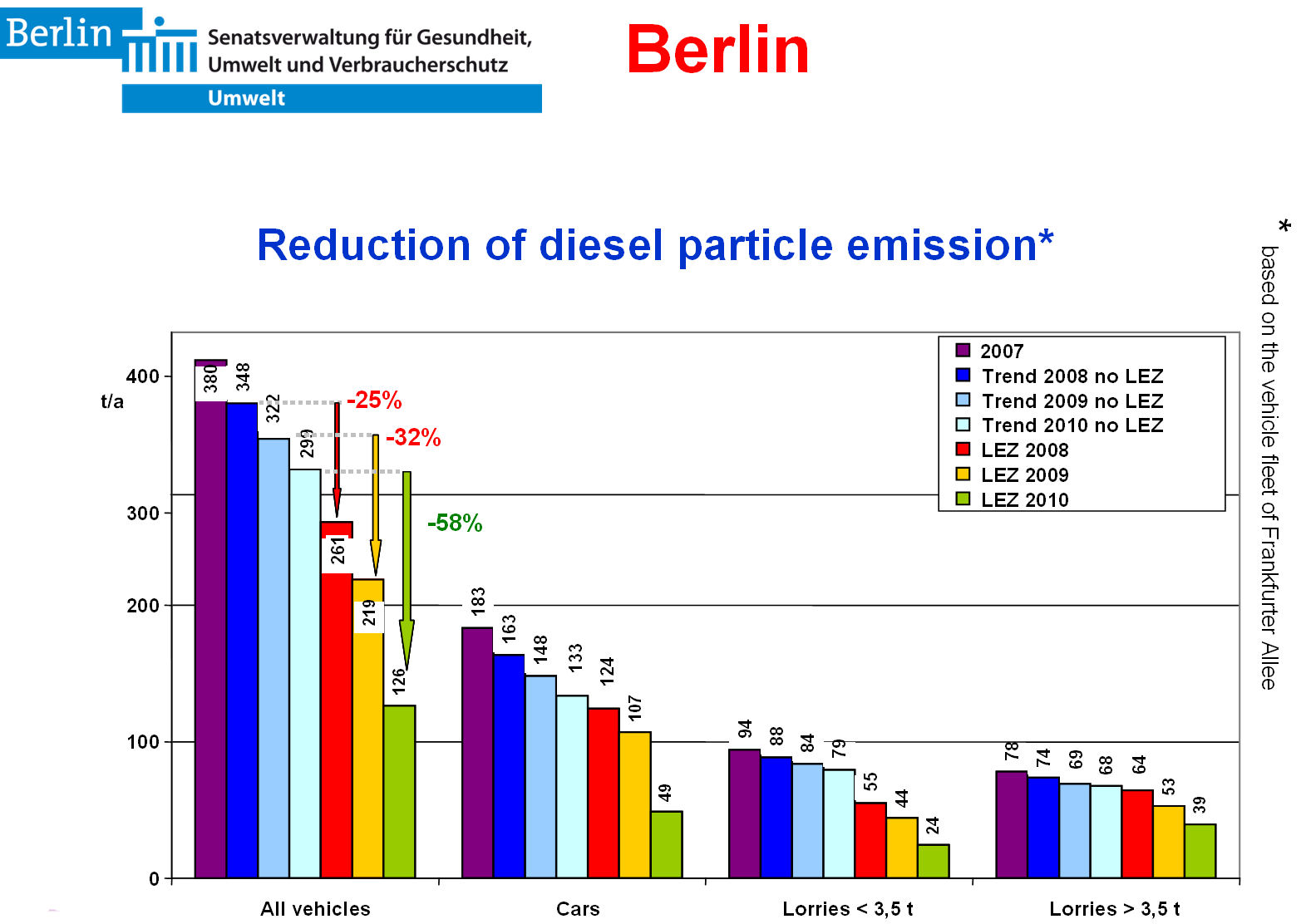
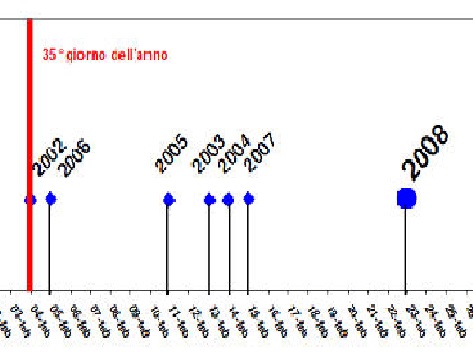
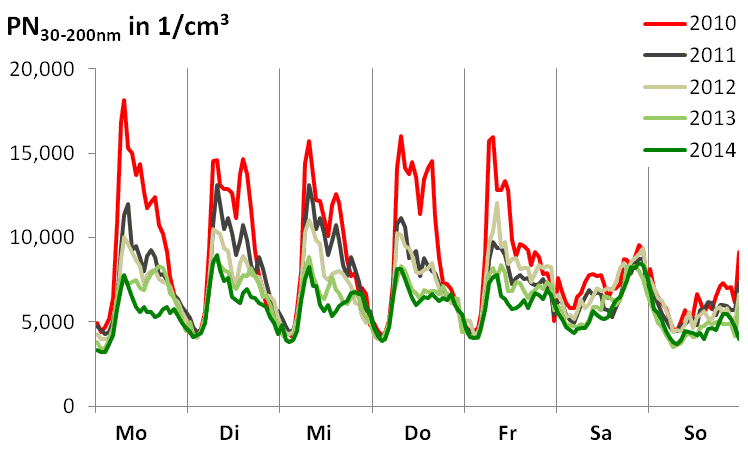
The impacts of Low Emission Zones are discussed here. See here for the impacts of Urban Road Tolls and Access Regulations.
The level of impact LEZs have on air quality depends on many things, such as
There are various ways to measure the impact of LEZs. Often the emissions of the vehicles in the LEZ are calculated and compared with a calculation for the same situation without an LEZ. Other times the air quality before and after is compared with similar situations.
You can read more about the EU Air Quality Standards on the EU website that need to be met and air quality health impacts on the World Health Organisation website (we take no responsibility for external websites). These may help explain the information below.
LEZs reduce emissions of vehicles. In particular they reduce diesel particulates. These are pollutants that are confirmed by the World Health Organisation to be carcenogenic (see the WHO agency IARC or United Nations press releases). These particles are part of the pollutant known as PM10, which is has an EU Air Quality Standard. However because diesel particulates are very small and PM10 is measured by mass (weight), the diesel particulates make up a small proportion of the PM10, but a proportionally larger impact on health.
Results from a number of cities are given below:
London Ultra LEZ:
The London Ultra LEZ has reduced NO2 by 32 µg/m3, traffic by 9%, CO2 by 13%
Preliminary results show the amazing success from the first six months of the ULEZ :
For more information on the impacts, see the Mayor of London's ULEZ report.
London LEZ:
Some of the results of the impact of the London LEZ are given below.
Please note: the public buses have higher standards than the LEZ. However, as this was achieved through the public bus contracts and not by the LEZ, these impacts are not included in the impacts of the LEZ. The impacts of the buses with less emission is significant, and also given below.
Impacts of the London LEZ:
Impacts of public buses with less emission, done together with the LEZ:
Berlin low emission zone impacts:
Berlin has undertaken extensive impact assessments of the LEZ, isolating the impact of the LEZ from other measures and influences.
The LEZ has reduced PM10 exceedences of the EU PM10 air quality standard from 28 to 24 per year, diesel particulate concentrations by 14-22%, & PM10 concentrations by 3% on main roads.
Berlin has reduced 58% of diesel particles, the most dangerous part of particulate matter. A graph of the results in "Reduction of diesel particulate emission" is shown below. The calculations are based on the vehicle fleet of the Frankfurter Allee in Berlin.

(if you are viewing this through automatic translation, the words in the title are "Reduction of diesel Particle emission" and in the key are "Trend 2008 no Low Emission Zone" etc).
The emissions of nitrogen oxides (NOx) lead to NO2 in the air. The LEZ has reduced these emissions by 20%.
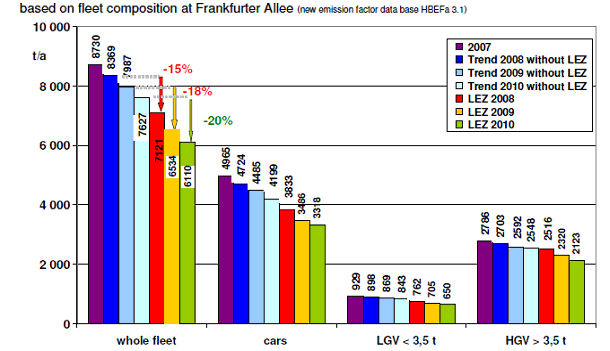
(if you are viewing this through automatic translation, the words in the title are "based on fleet composition at Frankfurter Alle (new emission factor base data HBEFa3.1" and in the key are "Trend 2008 no Low Emission Zone" etc).
Milan Ecopass and Area C impact
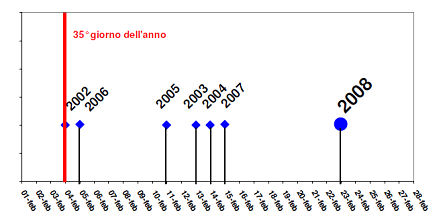
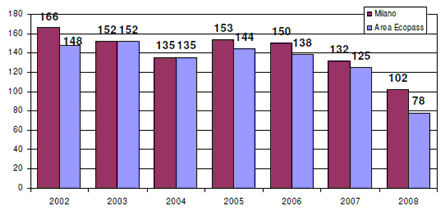
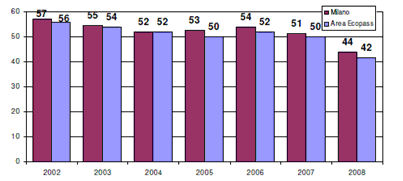
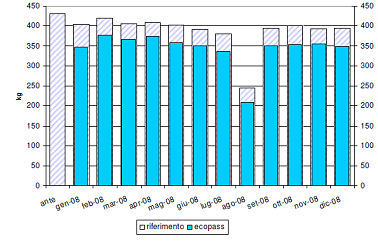
The Netherlands LEZ, in 9 cities:
Rotterdam
Rotterdam's LEZ was extended in January 2016 to affect cars and light duty vehicles. It now bans diesel vehicles registered after 1 July 2001 and petrol vehicles and LPG vehicles registered after 1 July 1992.
The impact of this scheme has been to reduce the number of severely polluting cars by half. Before the extended LEZ, of the up to 700 000 vehicles enter Rotterdam, 1.18% were older models with high emissions. Since the extended LEZ this has dropped to 0.66%. The city authorities estimate that this reduces emissions of soot by between 20 and 30 %.
The proportion of dirty vehicles is likely to reduce further. There is currently no penalty for violating the ban. However, from 1 May drivers there is a €90 fine penalty.
For more information, visit The Eltis website, our Rotterdam page.
The low emission zone in Leipzig was introduced in 2011 with the green badge (Euro 4 diesel, Euro 1 petrol). The announcement and enforcement of the low emission zone caused an accelerated modernization of the vehicle fleet in the city. Leipzig has the only LEZ in the Saxony region of Germany, as well as the most modern car fleet, due to the LEZ.
The figure below shows the weekly variation of the ultrafine particle number concentration, which corresponds to similar traffic volumes from 2010 (before the LEZ) to 2014. The weekly variation of the soot particle mass concentration is basically identical. The daytime concentration in 2014 was half of that in 2010.
Over the four years of the low emission zone, the highly toxic matter soot and ultrafine particle number concentrations have reduced by 47 and 56%, respectively. This significant reduction was achieved due to the fitting of diesel particle filters to meet the LEZ emission standards. This is similar to the reduction seen in the Berlin LEZ, but using a different assessment method. This strengthens the robustness of both assessments.
Black Carbon is the part of the PM10 that comes from vehicles, and is also the part that is most harmful to health. Black Carbon is also not affected by long range emissions outside the control of the city, which PM10 concentrations are. Source: TROPOS, and Gunter Löschau (Saxon State Office for Environment, Dresden)

Cologne
Stockholm
The Stockholm LEZ has been in operation since 1996, and its impact was extensively estimated in 2000. The impact on emissions of particles (PM10) and nitrogen oxides (NOx) are given below.
PM10 emissions NOx emissions
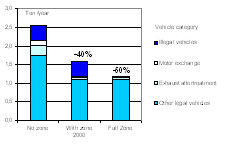
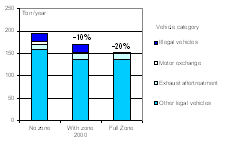
Since 2000, there has been further work in Stockholm to reduce illegal vehicles (those not meeting the standards). Illegal vehicles are now less than 5% of those entering the zone. The contribution of emissions from illegal vehicles will therefore have been reduced.
In looking at the impact on concentrations, the levels of PM0.2 (particles less than 0.2 μm in diameter) have been estimated. These are some of the smallest particles that are of most concern to health. Since diesel particulate exhaust emissions are all PM0.2, they are reduced by the LEZ. The map below represents the estimated percentage reduction in PM0.2 concentrations in Stockholm due to the LEZ.
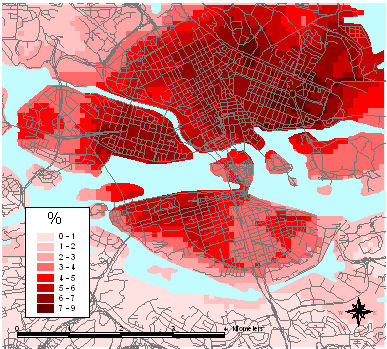
As can be seen from the coloured map, emissions reduced differently in different parts of the city. Where the lorry traffic is heavier there is more impact from cleaner lorries. The map shows that concentrations of PM0.2 were reduced by between 0.5 and 9% with the LEZ. If all vehicles had been fully compliant, then the concentrations would have been reduced by between 0.5 and 12%.
Copenhagen estimated the likely impact of the LEZ in terms of the health impact:
Non-air quality impacts
Fitting a replacement, cleaner engine

© Gregory Gerber - shutterstock.com
For some long-life vehicles, replacing the existing engine with one that is of a higher emissions standard may be an option (also referred to as “repowering”). These vehicles might include:
This may be particularly relevant if the engine needs replacing as part of the maintenance of the vehicle anyway.
To allow entry into a low emission zone, this change to your vehicles emissions will need to be certified. Different countries have different approaches to this. In some countries you may be able to have the change made on your vehicle registration papers, or provide other proof for the low emission zone authorities.
Conversion to an alternative fuel
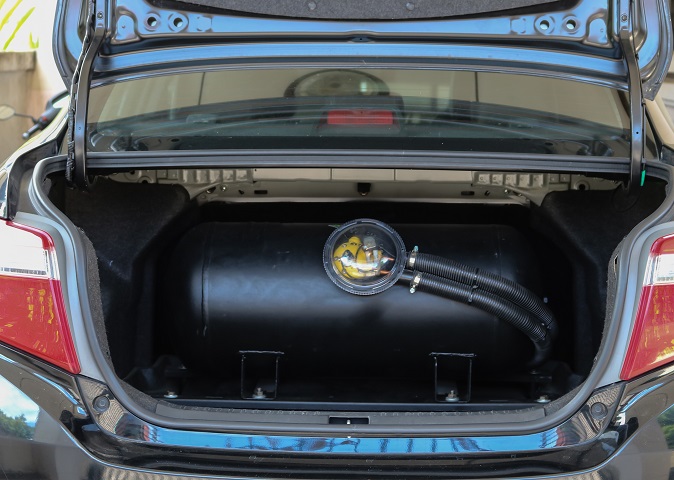
When considering retrofitting your vehicle, it is important to make sure that you get the right retrofit to allow you entry into the Low Emission Zones you need.
Which Countries allow Retrofitting?
More information is available from the pages on the individual LEZs, and each LEZs' own websites, but in general in terms of fitting particulate filters:
In Austria you can retrofit some lorries with a particulate filter to meet the emissions standards. Find out here which companies offer retrofitting in Austria.
In Germany you can retrofit to Euro 2, 3 or 4 with a particulate filter. Find out here which companies offer retrofitting in Germany.
In Belgium Euro 3 diesel vehicles with a particulate filter can enter until 2019 (after registration). Find out here which companies offer retrofitting in Belgium.
In the Netherlands since July 2013 the full Euro 4 standard is required to access to the environmental zones, and retrofitted vehicles are no longer allowed. More information (in Dutch). Find out here which companies offer retrofitting in the Netherlands.
In London, vehicles can be retrofitted as long as the retrofit device is certified as meeting the required emissions standard of Euro 4 in 2012. Only full filters are certified in London. Find out here and here which companies offer retrofitting in London.
In Denmark, particulate filters should be fitted on Euro 3 or earlier vehicles after 2010. Only full filters are certified in Denmark. Find out here which companies offer retrofitting in Denmark.
In most Italian low emission zones particulate filters can be fitted to allow access. However, this depends on the individual city. Find out here which companies offer retrofitting in Italy.
In Sweden retrofitting is allowed if you meet fit both a particulate filter and SCR to meet the required standard. Find out here which companies offer retrofitting in Sweden.
When considering retrofitting your vehicle, it is important to make sure that you get the right retrofit to allow you entry into the Low Emission Zones you need.
Which Countries allow Retrofitting?
More information is available from the pages on the individual LEZs, and each LEZs' own websites, but in general in terms of fitting particulate filters:
In Austria you can retrofit some lorries with a particulate filter to meet the emissions standards. Find out here which companies offer retrofitting in Austria.
In Germany you can retrofit to Euro 2, 3 or 4 with a particulate filter. Find out here which companies offer retrofitting in Germany.
In the Netherlands since July 2013 the full Euro 4 standard is required to access to the environmental zones, and retrofitted vehicles are no longer allowed.
In London, vehicles can be retrofitted as long as the retrofit device is certified as meeting the required emissions standard of Euro 4 in 2012. Only full filters are certified in London. Find out here and here which companies offer retrofitting in London.
In Denmark, particulate filters should be fitted on Euro 3 or earlier vehicles after 2010. Only full filters are certified in Denmark. Find out here which companies offer retrofitting in Denmark.
In most Italian low emission zones particulate filters can be fitted to allow access. However, this depends on the individual city. Find out here which companies offer retrofitting in Italy.
In Sweden retrofitting is allowed if you meet fit both a particulate filter and SCR to meet the required standard. Find out here which companies offer retrofitting in Sweden.

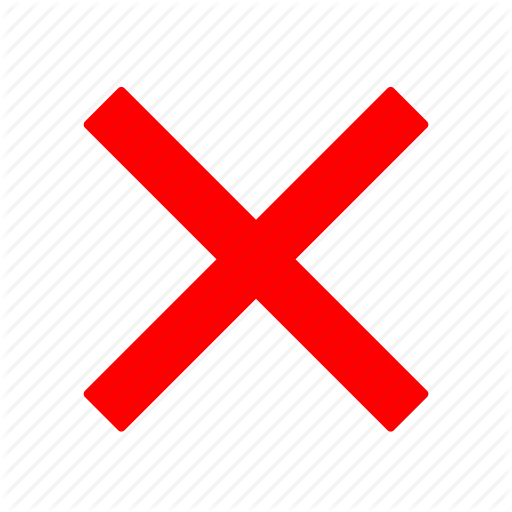
This website and data are copyrighted, but free of charge for private use. We have many data options see here.Click here to confirm your use is private or you have an arrangement with us. If not get in touch and Contact Us .